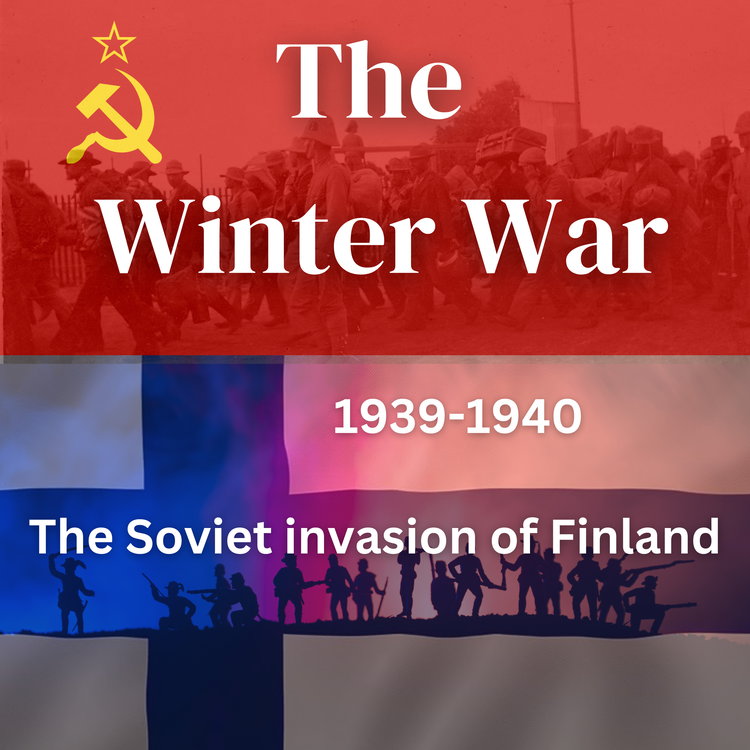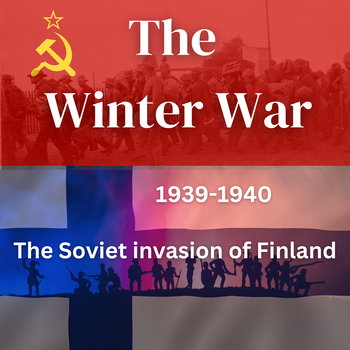
Episode 3 - Mannerheim back in the saddle as the Russian Blietzkrieg turns into a Botchedkrieg
Loading player...
This is episode 3 and the Russians have just bombed Helsinki on the morning of 30th November 1939 — missing most of the vital infrastructure but hitting the residential area and a square in front of the main railway station, as well as a hangar at Malmi Airfield.
Two hundred people died in the first few hours of the invasion, most were civilians.
The Finns were caught totally off guard - their anti-aircraft gunners managed to fire off a few shots but by then Russian bombers had turned and were miles away.
As the planes disappeared to the east, air raid sirens began to wail, a belated warning which by then was a waste of time.
However, after lunch, the planes were back. Fifteen Red Air Force bombers swept in for another raid soon after the all-clear had sounded in Helsinki, the streets were choked with people clearing up after the morning attack — fifty more civilians died and at least 150 were wounded in this second bombing run.
The Russians also targeted other towns, including Viipuri, the harbour in Turku, and they took aim at the hydroelectric plant at Imatra and then bombed a small gas mask factory in Lahti.
The hydroelectric plant at Imatra was not the only target, the Russians bombed an important road between the northern shores of Lake Ladoga and Helsinki, north of the Mannerheim Line.
While this was going on, the Red Army landed specialist commandos on the uninhabited islands of Sieksari, Lavansaari, Suursaari and Tytarsaari —without firing a shot.
Back in Helsinki, the shock of the attack was visible on everyone’s faces. Parts of the city were on fire and it was through this maze of blackened buildings, corpses and craters in the roads that Field Marshal Gustav Mannerheim wound his way in his chauffered car.
There was no time to waste. Finland’s geography suited their initial plans. The Karelia Isthmus was the lynchpin, so Mannerheim was concentrating his defences there. The only other area that offered an immediate threat, was the 65 mile stretch just north of Lake Ladoga’s shores.
There were two good roads here, one started from inside Russia at Petrozavodsk, and the other from Murmansk along the rocky coast of Lake Ladoga. Both roads converged near the small town of Kitela, and a few miles from there was Finlands crucial rail network. It also was a point where good roads led north and south.
Mannerheim knew that the Russians were going to aim at these two areas and he was right. This central zone near Kitela was the backdoor to the Isthmus and could support a large army on the move.
The Finns were ready for this backdoor trick, they’d been practicing during war games in the preceding years for precisely this route.
The strategy was even more interesting. They would let the large Soviet Army move along these roads until they reached a line of defences that linked Lake Ladoga to Kitela and another Lake called Syskyjarvi.
Then they’d pin down the Russians, and hit their logistic route now strung out back eastwards, their left flank now up against Lake Ladoga, and the right exposed to Finnish soldiers on skis. The would cut off the head of the Russian salient and then methodically destroy the Russian army north of Ladoga.
Two hundred people died in the first few hours of the invasion, most were civilians.
The Finns were caught totally off guard - their anti-aircraft gunners managed to fire off a few shots but by then Russian bombers had turned and were miles away.
As the planes disappeared to the east, air raid sirens began to wail, a belated warning which by then was a waste of time.
However, after lunch, the planes were back. Fifteen Red Air Force bombers swept in for another raid soon after the all-clear had sounded in Helsinki, the streets were choked with people clearing up after the morning attack — fifty more civilians died and at least 150 were wounded in this second bombing run.
The Russians also targeted other towns, including Viipuri, the harbour in Turku, and they took aim at the hydroelectric plant at Imatra and then bombed a small gas mask factory in Lahti.
The hydroelectric plant at Imatra was not the only target, the Russians bombed an important road between the northern shores of Lake Ladoga and Helsinki, north of the Mannerheim Line.
While this was going on, the Red Army landed specialist commandos on the uninhabited islands of Sieksari, Lavansaari, Suursaari and Tytarsaari —without firing a shot.
Back in Helsinki, the shock of the attack was visible on everyone’s faces. Parts of the city were on fire and it was through this maze of blackened buildings, corpses and craters in the roads that Field Marshal Gustav Mannerheim wound his way in his chauffered car.
There was no time to waste. Finland’s geography suited their initial plans. The Karelia Isthmus was the lynchpin, so Mannerheim was concentrating his defences there. The only other area that offered an immediate threat, was the 65 mile stretch just north of Lake Ladoga’s shores.
There were two good roads here, one started from inside Russia at Petrozavodsk, and the other from Murmansk along the rocky coast of Lake Ladoga. Both roads converged near the small town of Kitela, and a few miles from there was Finlands crucial rail network. It also was a point where good roads led north and south.
Mannerheim knew that the Russians were going to aim at these two areas and he was right. This central zone near Kitela was the backdoor to the Isthmus and could support a large army on the move.
The Finns were ready for this backdoor trick, they’d been practicing during war games in the preceding years for precisely this route.
The strategy was even more interesting. They would let the large Soviet Army move along these roads until they reached a line of defences that linked Lake Ladoga to Kitela and another Lake called Syskyjarvi.
Then they’d pin down the Russians, and hit their logistic route now strung out back eastwards, their left flank now up against Lake Ladoga, and the right exposed to Finnish soldiers on skis. The would cut off the head of the Russian salient and then methodically destroy the Russian army north of Ladoga.

